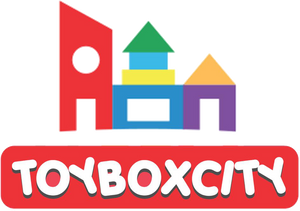Fun Science Experiments Kids Can Try at Home
Science doesn’t have to be confined to classrooms or laboratories — it can be an exciting adventure right in your living room or kitchen. For children, hands‑on experiments are one of the best ways to spark curiosity, encourage problem‑solving, and make learning memorable.
1. Kitchen Chemistry: Baking Soda and Vinegar Volcano
Few experiments are as iconic as the baking soda and vinegar volcano. It’s a classic introduction to chemical reactions.
-
Materials Needed: Baking soda, vinegar, dish soap, food coloring, a container (plastic bottle or cup).
-
Steps: Place baking soda in the container, add a few drops of dish soap and food coloring, then pour vinegar over it. Watch the eruption!
-
Science Behind It: The reaction between baking soda (a base) and vinegar (an acid) produces carbon dioxide gas, which creates fizzing and bubbling. The dish soap traps the gas, making foamy “lava.”
This experiment teaches kids about acid‑base reactions and gas formation in a fun, visual way.
Why We Recommend This Experiment: It’s easy, safe, and dramatic — perfect for introducing children to chemistry while keeping them entertained.
2. Physics in Action: Balloon Rocket Race
This experiment demonstrates Newton’s Third Law of Motion: for every action, there is an equal and opposite reaction.
-
Materials Needed: Balloons, string, tape, straw.
-
Steps: Thread a straw through a long piece of string and tape the straw to a balloon. Stretch the string across a room, inflate the balloon, and release. The balloon races along the string.
-
Science Behind It: Air rushing out of the balloon pushes it forward, showing how propulsion works.
Kids learn about forces and motion, connecting the experiment to real‑world applications like rockets and airplanes.
Why We Recommend This Experiment: It’s interactive, competitive, and teaches physics in a way kids can see and feel.
3. Plant Science: Growing Beans in a Jar
This experiment helps children understand how plants grow and what they need to thrive.
-
Materials Needed: Clear jar, paper towels, water, dried beans.
-
Steps: Line the jar with damp paper towels, place beans between the glass and towels, and keep moist. Watch roots and shoots emerge over days.
-
Science Behind It: Seeds germinate when exposed to moisture and warmth, showing the life cycle of plants.
This experiment introduces biology and botany, helping kids appreciate nature.
Why We Recommend This Experiment: It’s a slow but rewarding experiment that teaches patience and observation skills.
4. Colorful Chemistry: Milk and Food Coloring Magic
This experiment creates swirling colors using simple ingredients.
-
Materials Needed: Whole milk, food coloring, dish soap, cotton swabs.
-
Steps: Pour milk into a shallow dish, add drops of food coloring, then dip a soap‑covered cotton swab into the milk. Colors swirl dramatically.
-
Science Behind It: Soap breaks down fat molecules in milk, causing movement that drags the food coloring along.
Kids learn about surface tension and chemical interactions.
Why We Recommend This Experiment: It’s visually stunning and teaches chemistry through art‑like patterns.
5. Earth Science: Homemade Water Filter
This experiment shows how filtration works to clean dirty water.
-
Materials Needed: Plastic bottle, sand, gravel, activated charcoal, coffee filter, dirty water.
-
Steps: Cut the bottle in half, layer filter materials inside, pour dirty water through, and observe cleaner water at the bottom.
-
Science Behind It: Each layer removes particles, mimicking how natural and engineered filters work.
Kids learn about environmental science and water purification.
Why We Recommend This Experiment: It connects science to real‑world issues like clean drinking water.
6. Light and Optics: Homemade Periscope
This experiment explores how mirrors reflect light.
-
Materials Needed: Cardboard box, two small mirrors, tape.
-
Steps: Cut holes at opposite ends of the box, place mirrors at 45‑degree angles, and tape securely. Look through one hole to see objects above or around corners.
-
Science Behind It: Mirrors reflect light at equal angles, allowing you to see around obstacles.
Kids learn about reflection and optics.
Why We Recommend This Experiment: It’s hands‑on engineering that shows how submarines and soldiers use periscopes.
7. Biology Fun: Invisible Ink with Lemon Juice
This experiment combines chemistry and biology with a touch of mystery.
-
Materials Needed: Lemon juice, cotton swab, white paper, lamp or iron.
-
Steps: Write a message with lemon juice, let it dry, then heat the paper gently. The writing appears.
-
Science Behind It: Lemon juice oxidizes when heated, turning brown and revealing the hidden message.
Kids learn about oxidation and chemical changes.
Why We Recommend This Experiment: It’s fun, secretive, and sparks curiosity about chemical reactions.
8. Engineering Challenge: Building a Bridge with Straws
This experiment teaches kids about engineering and structural design.
-
Materials Needed: Drinking straws, tape, small weights.
-
Steps: Build a bridge using straws and tape, then test how much weight it can hold.
-
Science Behind It: Teaches principles of tension, compression, and load distribution.
Kids learn about engineering and problem‑solving.
Why We Recommend This Experiment: It encourages creativity, teamwork, and critical thinking.


